Part of our Lake Powell Answers Series:
Question: What happened to Glen Canyon Dam during the 1983 Flood Season. I hear the water went over the top of the dam.
Answer: No, the water did not go over the top of the dam. The rest of the answer is as follows ~
I worked for seven years in the tour program at Glen Canyon Dam. One of the best parts about the job, besides getting to share knowledge with folks, was learning. This is a rather long answer, but alas, it is a long story. Grab a cup of tea, a blanket and enjoy!
A few nights ago I found these Bureau of Reclamation videos addressing the 1983 flood damage to the spillways at Glen Canyon Dam. They are longish for YouTube videos but contain excellent, historical footage.
Lake Powell Water History
It took Lake Powell 17 years to fill as there were downstream legal water requirements to be met. The lake began filling in 1963 and filed for the first time in 1980. With about 2000 miles a of shoreline a vertical foot of water at the top of Lake Powell is a heck of a lot of water.
The average flow (keeping in mind nothing is ever really average in the desert) is roughly 12 million acre feet of water a year. One acre foot is 325,851 gallons, an acre of land with one foot of water on it, or roughly enough water for a family of four or five for a year. So in an “average” year 12 million of these chunks of water for families of four or five come down the Colorado river.
Lake Powell filled in 1980 and again the next 2 years, with it being drawn down in the winter some 15 feet. No one anticipated the lake would gain more than 15 vertical feet of water over 2000 miles of shoreline. The lake only gains water during spring run off from April to July, from July to April the lake releases water down the Colorado River and the level falls.
Lake Powell 1983 Floods
The beginning of 1983 was actually below average for snow pack in our drainage area, roughly 110,000 square miles. However, April and early May saw 5 large cold fronts move through. The first three brought snow, the last two, rain, and by May 5th Salt Lake City hit 80 degrees. The snow pack was super saturated, and with the warm temperatures, began to melt quickly. The warmer spring gets, the faster, the less chance the snow melt can sink into the ground. In a slow warming springs the floods of 1983 likely would not have happened.
The first indication of problems occurred in Salt Lake City, Utah, where major streets were turned to rivers and in Bountiful, Utah, were normally small creeks were causing massive mud slides and moving houses of their foundations.
As Lake Powell quickly reached “full”, which is 3700 feet above sea level, it was continuing to rise 18 vertical inches a day. The river outlet works, consisting of four, 14 foot in diameter pipes, were opened to carry the excess water. The 8 generators in the power plant were also running at full speed to release water. Lake Powell was still rising.
Glen Canyon Dam Spillway Damage
The spillways, 41 foot in diameter tunnels designed to carry water around the dam during times of flood were opened. The first three days went well but then they began to fail. Cavitation was occurring in both the left and right spillways. Reinforced plywood sheets were placed over the opening to the spillways and on day four a crew was lowered down, by ropes and a cart, to inspect the damage. What they found was significant.
In the left spillway, a hole, 32 feet deep, 30 feet wide, and 150 long had been caused by the cavitation process which had chewed through 3 foot thick reinforced concrete.
After the inspection 8 foot tall metal flash boards were installed over each of the spillway openings to increase storage capacity. Yes, flash boards were holding back 8 feet of Lake Powell.
Repairs at Glen Canyon Dam
As soon as the flood danger had passed crews went to work, not only repairing the spillways but redesigning them as well. Spillways on a dam this large had never been used before, and most were similarly designed to Glen Canyon. Engineering crews built model dams and came up with “air slots” to prevent cavitation.
The spillways are shaped somewhat like an arm with the cavitation damage occurring in the elbow area. For Glen Canyon Dam the air slots, 4 feet wide, and 4 feet deep, were put in about 1/3 of the way from the top of the spillway. With a lip on them, rather like a ramp, the water flows over them and is infused with air, cushioning it’s ride the rest of the way down the spillway and preventing cavitation.
Air slots of some form or another are now utilized in most dams.
Videos of Glen Canyon Dam and Lake Powell 1983 Floods
Please enjoy the following three videos.
Part 1
Part 2
Part 3
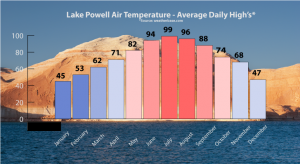

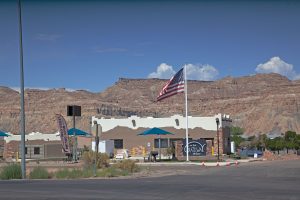
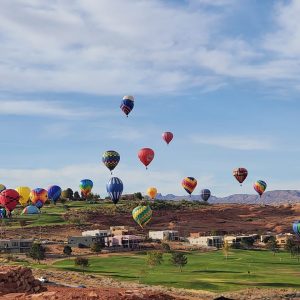

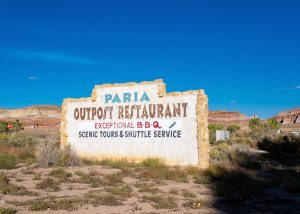
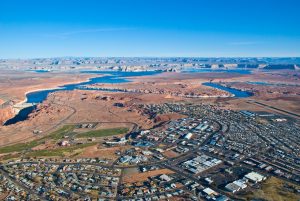
Lake Powell also rose 7 Ft from the week long storms of October 2006
Good to see myself when I was much younger. Gamble still owes me a Coke for showing him the sandstone beginning to come out of the spillway!
Fill lake powell
Lawrence
A lot of us owe you a Coke!!
Thanks for stopping in. The ’83 floods have been one of my favorite study topics over the years and this year, 2011, is shaping up to see massive amounts of water. With the lake down so low tho, not much chance of any spillway usage 🙂
Heather,
So do you think the dam was close to collapse or not? BOR officials said it was not much of a problem and no danger.
Clifford Barrett of BOR said “that neither the spillway nor the dam was in danger of failng”
These are great videos. I would be curious to how you discovered them.
The spillways were not in danger, however, if the water were to start spilling over the top (and they were within inches of it happening), the bottom of the dam would quickly be destroyed. With water cascading down that steep of a drop, the generators would be obliterated, and serious damage would insue. So, yeah the boys were nervous! A 4’ layer of plywood, then replaced with an 8’ metal flashing was the only saving grace for the dam. I stood on the edge in July of 1983 and the vibration and power of the water could be felt there. It was a scary, scary, situation!
And now we sit at the opposite end of the water flow. Snowpack in the drainage area today is at 74% of average and since spring runoff started the lake has yet to rise a foot. If only we could make enough snow!
Wondering why the ‘river outlet pipes’ or indeed the pipes , tubes , tunnels that feed the hydro station at this and other dams don’t seem to be impacted by cavitation problems.
I would expect that they run pretty much every day of the year seemingly without issues.
In 1983 i was in the Grand Canyon on a river trip. i had just finished my schooling and i know the trip
was the from of middle of June to late June, 1983. The
Colorado River was very high. The trip was exciting! The guides said they had “…never seen the river with so much flow.”
I lead a trip that started May 30, and ended June 11th. On the sixth of June a note was dropped to us. It was a very exciting time since it was the first ever trip for all 15 of us. The morning the high water reached us we were standing knee deep in 50 degree water loading boats to avoid the flood. The whirl pools and uplifts were huge and we rowed like crazy to just avoid being sucked into them or the backeddys. Did Lava at 65000 cfs..6/8/1983…right down the middle, and survived.